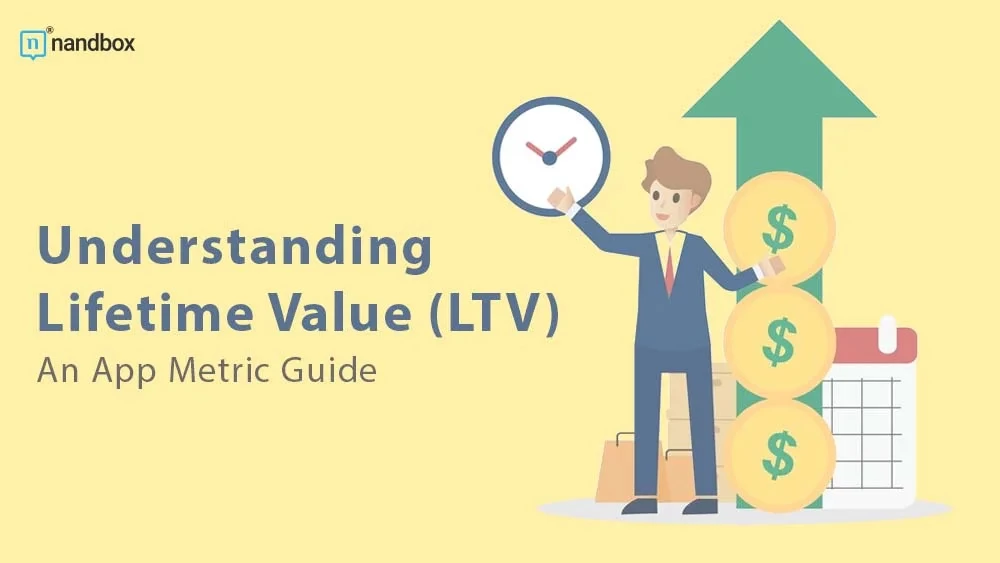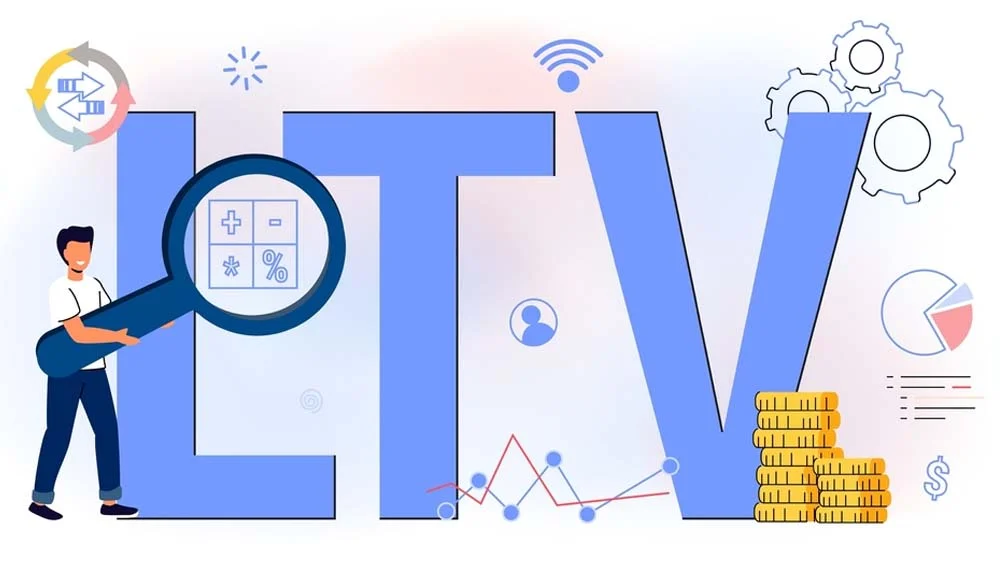When the mobile app ecosystem keeps growing quickly, it gets harder to get high-quality customers. Users frequently install apps only to never use them again, and they also frequently uninstall them after just one use. App marketers need to focus on getting high-quality users to increase their return on investment (ROI). To better understand this, you need to know how to use the user lifetime value (LTV) metric to measure how well your app project is doing. Let us begin by determining who the high-quality user is.
High-quality users are people who use your app often, interact actively with its features, and buy things within the app. They are the ones who pay for your mobile app and increase its return on investment. As a result, the value that a user adds to an app over the course of their life can be used to determine the success of a mobile app advertising campaign. This is measured by the user lifetime value (LTV) statistic, which is one of the most important but hard-to-find key performance indicators (KPIs) for app marketing.
What Is Lifetime Value (LTV) App Metric?
The Lifetime Value (LTV) App is a metric that allows you to calculate the total revenue generated by a user for your app over the course of their lifetime. You can calculate LTV by multiplying the average value of the purchase by the number of purchases a user makes and the average retention time of a user. This metric is very important for figuring out how well your app and your efforts to market it will do in the long run. By increasing the LTV of your app, you can increase your ROI and attract more high-quality users to your app. Getting to know the LTV of your users can help you run your business more efficiently and successfully.
Importance of the LTV App Metric
The Lifetime Value app metric is extremely important for a variety of reasons. These reasons are ones that determine the core essence of your app’s progress. If you calculate your app’s LTV correctly, it will provide you with the following information:
Your LTV App Metric Determines the Level of Your Market Connection
You can tell if your business or products are popular with customers based on a number of metrics. Your Net Promoter Score (NPS) is one example. Nevertheless, most of these indicators, including NPS, only provide you with a general idea of how customers feel about your business. These emotions don’t necessarily translate into money and success.
By getting a good estimate of your clients’ LTV, you can learn a lot more about your products, marketing, and sales methods, as well as how your brand affects your long-term revenue.
You Can Find Out When a Customer Will Start to Pay Off
This might take longer than you think. Let’s say a company solely considers the income from a new customer’s initial purchase. In that case, it can decide strategically incorrectly that a particular product, marketing initiative, or consumer group is not profitable. But what if several of those clients eventually make larger purchases from that company?
Even though it could seem like a short-term loss, the promotional campaign or initial purchase that draws your consumer in could result in a long-term profitable connection. Only by projecting the lifetime value of your consumers will you be able to learn this.
The LTV App Metric Determines Which Personas Should You Invest In
Various customer segments will represent various LTVs for your business. By understanding this, you can use your resources for research and development, branding, operations, and other costs in a smarter way. You will be able to give more resources to the parts of your user base that will make your company more money in the long run.
Different Types of LTV Calculations
The following are the different types of LTV calculations that you can make: It’s important to understand the various types of LTV calculations so that you can decide which one is best for your app. The two most common types are simple and complex LTV. Simple LTV is a simple way to figure out how much money a customer will pay over the course of their life. Complex LTV is more granular, taking additional factors such as retention and engagement into account. This can give you more detailed information about what might be affecting customer loyalty or spending habits, which can help you come up with better ways to improve.
Strategies to Increase Your App’s LTV
App owners should continuously look for opportunities to increase their app’s LTV. This could mean giving long-term users discounts or coming up with new features or content to keep them interested over time. Also, if you add loyalty and rewards programs to your app, customers will be more likely to use it again and again to get more bonuses and rewards. Try out different pricing models, like subscriptions or one-time purchases, as these are great ways to increase the LTV of your app.
Analyzing and Optimizing ROI
Another good way to increase your app’s lifetime value is to analyze and improve its return on investment (ROI). ROI analysis can help you understand how users behave and track the success of different campaigns. By doing so, you can make informed decisions about how to allocate resources, adjust pricing models, and improve the app’s overall performance. Make sure you keep track of all the traffic and activity that comes in and out of your app, as this information will be crucial for figuring out the ROI.
Integrating with Advertising Platforms to Enhance LTV
Adding your app to different advertising platforms could be a great way to increase the value of your app over time. You can show targeted ads in your app with platforms like Google’s AdMob and Amazon’s Mobile Ads API. This can give you an extra source of income and help you turn more users into paying customers. You can also learn a lot more about how people use your app by using these advertising solutions. This will help you improve the way your app works.
nandbox’s Way of Helping You With the LTV App Metric
The whole process of determining your app’s lifetime value can be very efficient and beneficial if you have a successful app that is worth your time and effort. With nandbox’s native app builder, you are guaranteed to have a professional app with all the features that will boost its success. Our documentation section will walk you through navigating our app builder and explain each and every module we offer you, from ready-made templates for a variety of different industries to a full and detailed documentation section. Check out our article if you’re interested in customizing your app with nandbox’s app builder for more information. Sign up now for our app builder and don’t miss the opportunity to create an app with a promising LTV app metric tool.






